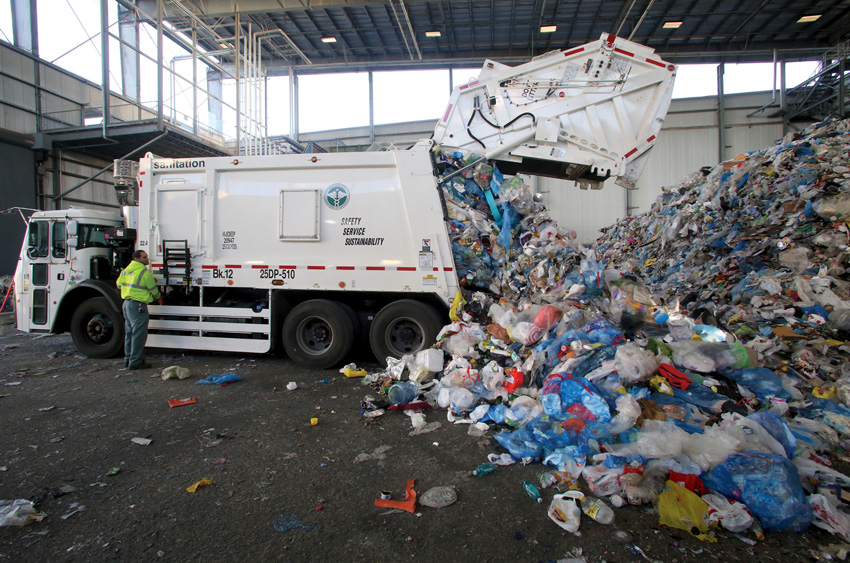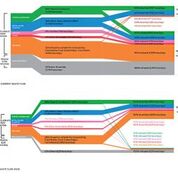Zero Waste
Learning Objectives:
- Explain the relationship between the management and disposal of waste and global warming.
- Define “zero waste” and other terms relevant to the topic of waste minimization.
- Discuss how building design can help or hinder minimization of waste and maximization of recovery of materials for recycling or reuse.
- Describe guidelines and standards that can assist architects and clients develop zero-waste facilities.
Credits:
This course is approved as a Structured Course
This course can be self-reported to the AANB, as per their CE Guidelines
Approved for structured learning
Approved for Core Learning
This course can be self-reported to the NLAA
Course may qualify for Learning Hours with NWTAA
Course eligible for OAA Learning Hours
This course is approved as a core course
This course can be self-reported for Learning Units to the Architectural Institute of British Columbia
View course on architecturalrecord.com »
Architects—even those who don’t call themselves super-green—by now are obliged to design buildings that conserve energy and water. But do they expect to create structures that allow occupants to better manage and reduce the waste they produce? Not so much. Nevertheless, that is what a number of zero-waste champions say is needed.

PHOTOGRAPHY: © MICHAEL ANTON/COURTESY DSNY
ONE WORD: PLASTICS Recyclables from New York households, including plastic, metal, and glass, arrive at a facility in Brooklyn for sorting.
How can architects help? First, the background: every day, Americans create mountains of trash. We toss food scraps, garden clippings, dog-eared magazines, soiled take-out containers, threadbare clothing, and broken furniture. In 2015, the U.S. generated approximately 262 million tons of municipal solid waste, according to the most recent figures available from the Environmental Protection Agency. But, of that, only 91 million tons, or less than 35 percent, was recycled or composted. The majority was sent to landfills or incinerated.
As everyone knows, trash and recyclables clutter loading docks and obstruct basements. Garbage bags clog sidewalks and attract vermin, while the collection of this refuse exacerbates traffic and has an adverse impact on air quality. Municipalities and businesses spend huge sums to dispose of their waste, often shipping it to distant states or even internationally to landfills or recycling centers.
Less well known, perhaps, is the relationship between the disposal of waste and global warming. Since landfill gas is in large part methane—a greenhouse gas that is many times more potent than CO2—effective resource and waste management are needed to slash heat-trapping emissions. According to the Green Business Certification Inc. (GBCI), increasing the national recycling rate by just 8 percent and reducing the amount of waste we generate by only 5 percent could eliminate the equivalent of 20 million metric tons of carbon.
Many progressive cities, of course, do recognize better management of their refuse as a powerful climate-change mitigation tool and have adopted ambitious waste-reduction targets in their long-rage environmental plans. This summer, 23 cities signed on to an “advancing towards zero waste declaration,” sponsored by C40 Cities, a global environmental non-profit organization. The signatories, which included seven U.S. cities, pledged that by 2030 they would reduce the amount of waste generated by each inhabitant by 15 percent and cut the amount sent to landfills or incineration by half.
What does the term “zero waste” actually mean? The Zero Waste International Alliance defines it as “designing and managing products and processes to systematically avoid and eliminate the volume and toxicity of water and materials, conserve and recover all resources, and not burn or bury them.” In practice, however, absolute zero is a tough mark to attain, especially for industrial economies, and many international and U.S. organizations recognize a 90 percent diversion rate from incinerators, landfills, or the environment as zero waste.
New York is one city whose zero-waste goals call for reducing what it sends to landfills and incinerators by 90 percent by 2030 (compared with a 2005 baseline of 3.6 million tons). Now, however, only about 20 percent of the garbage the city produces each day is diverted, and just over half of the metal, glass, and plastic that inhabitants discard is collected for recycling. A meager four percent of food scraps and other organic waste is collected for composting, through a voluntary program. To have any hope of reaching its targets, the city will have to drastically reduce the amount of waste generated and dramatically ramp up recycling and composting rates.
Architecture and design can help remove some of the roadblocks in the way of achieving goals like those adopted by New York, according to zero-waste advocates. One way is through clearer messaging. “People don’t recycle, because it is confusing,” says Ushma Pandya Mehta, cofounder of Think Zero, a waste-reduction and diversion consultant. The rules are constantly changing, and they are different from place to place, she says. But facilities with good signage and well-placed receptacles—along with education—typically see strong participation, adds her Think Zero partner, Sarah Currie-Halpern.
That’s what San Francisco International Airport (SFO) is banking on. As part of its goal to reach zero waste by 2021, it examined all aspects of airport operations, including offices, maintenance shops, and terminals. Then it reached out to Gensler for help. Sustainability director David Briefel describes the firm’s role as one that was “graphics heavy” but also involved coordinating with SFO management and custodial staff and assisting with studies of waste-diversion rates and sorting accuracy at security screening points, food concourses, gates, and at back-of-house areas. The physical product of this exercise was new trash receptacles and signage intended to help airport users and employees better differentiate the various waste streams. The graphics and bins have so far been installed in Terminal 2, but will ultimately be implemented airport-wide.
Reducing waste and recovering more for recycling and reuse can also entail infrastructure-scale strategies, such as the installation of pneumatic tube systems. Powered by turbines that generate a vacuum, these whisk away trash at high speeds to a central terminal. The technology reduces the amount of space that individual buildings must devote to storage of waste and eliminates the need for piling trash bags at the curb. Best-suited for new, multi-building complexes, the first systems were installed in Sweden in the 1960s and now exist all over the world.

IMAGES: © THE CENTER FOR ARCHITECTURE
ZEROING IN One way New York could meet its 2030 goals (bottom) is by cutting the current amount of trash produced (top) by 80 percent, reducing the quantity of recyclables generated by 50 percent, and ramping up diversion of recyclables to 90 percent.















